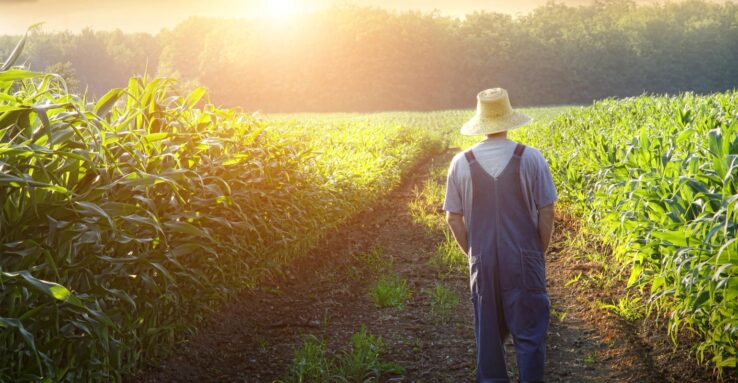Sustainability may have become a buzzword in recent years, but this shouldn’t detract from the importance it plays in our world today and in its future. As growing numbers of people become aware of their carbon footprint and their consumer habits, they are beginning to move away from goods and services that cause harm to the planet and its inhabitants in favor of those which replenish and respect it.
Businesses, too, are waking up to this fact as they begin to prioritize sustainability practices as part of their corporate responsibility and factor in the social and environmental impact of their operations alongside their bottom line. One industry that is taking up this mantle is the food industry. This article will look at some of the practices being employed by the food industry as it embraces the challenge of sustainability.
Farming Practices

Source: supermarketnews.com
One of the most significant changes in the food industry in recent years has been the shift toward more sustainable farming practices, which aim to produce food in a manner that preserves the biodiversity and natural resources of the environment.
The movement from conventional farming methods to more advanced and sustainable agricultural techniques such as conservation tillage and integrated pest management not only decreases the generation of waste and dependence on chemicals but also prioritizes the preservation of water resources and soil health, promoting the well-being of local ecosystems and the conservation of biodiversity.
Sustainable food production practices such as these also aim to reduce poverty and improve the livelihoods of farmers and farm workers by ensuring they receive a fair price for their products.
Packaging

Source: pakfactory.com
Sustainable packaging is another major trend in the food industry as many companies such as Good Start Packaging look to alternative packaging solutions to reduce waste and damage to the environment.
As it is made from renewable resources, sustainable food packaging reduces the use of harmful chemicals and materials used in conventional packaging materials, such as polystyrene and plastic, which are not biodegradable and cause environmental pollution and harm to wildlife.
Characterized by its eco-friendly attributes, which include recyclability, compostability, and a lightness of weight, sustainable packaging provides a greener alternative to the harmful foams and plastics, which are a major contributor to the world’s growing plastic waste problem.
Sustainable packaging also helps to reduce the food industry’s carbon footprint as packaging production and transportation are major contributors to greenhouse gas emissions.
By embracing sustainable packaging solutions, such as opting for lighter-weight packaging materials that require fewer raw materials and less energy for extraction and manufacture, the food industry can reduce the amount of energy and resources used in the production process.
Often lighter and more compact than conventional packaging, sustainable packaging also reduces the amount of fuel needed to transport products, further reducing the industry’s carbon footprint.
Food Production

Source: effca.org
Renewable energy plays a crucial role in the food industry, with many companies in Texas embracing it to reduce their dependence on fossil fuels and lower their energy costs. By opting for renewable energy sources, such as solar or wind power, these food companies can not only contribute to a cleaner environment but also take advantage of potentially lower energy rates offered by energy companies in texas rates.
Some of the ways renewable energy is being used in sustainable food production include:
Solar Energy: Solar panels are being used to generate electricity for irrigation systems, reducing the need for grid-supplied electricity to pump water for crops. Solar energy can also be used to power processing facilities, further reducing reliance on fossil fuels.
Wind Energy: Farms can install wind turbines to produce electricity for their processing facilities, reducing reliance on grid-supplied electricity and minimizing the emission of greenhouse gases.
Biomass Energy: Food processing facilities can make use of agricultural waste, such as wheat straw, corn stalks, and animal manure, to generate heat and electricity, reducing their dependence on fossil fuels.
Geothermal Energy: Greenhouses for crop production can make use of geothermal energy to provide heat, reducing the need for fossil fuels and minimizing greenhouse gas emissions.
Hydropower: Hydropower can be used to generate electricity for processing facilities instead of grid-supplied electricity.
Waste Reduction

Source: cleaninginstitute.org
Waste reduction is an increasingly important part of sustainable food production, and many companies are now taking steps to decrease the amount of food waste generated by implementing food waste reduction initiatives that provide surplus food to communities in need or are using it to generate energy.
According to a report by the Natural Resources Defense Council (NRDC), an estimated 40% of food in the U.S. goes uneaten, ending up in rotting landfill sites, while millions of people struggle to access enough nutritious food each day. Food recovery programs aim to bridge this gap by directing surplus food to those who need it.
This is achieved in a number of ways, which include food donations from local businesses, the redistribution of surplus food from restaurants, supermarkets, and food manufacturers, and non-profit organizations that partner with food businesses to recover surplus food and distribute it to those in need such as low-income families and the homeless.
Repurposing food waste is also an important aspect of sustainable food production and waste reduction. Food waste statistics highlight the significance of finding new uses for food waste, such as feeding livestock, composting to produce fertilizer, or converting it into energy. By reducing waste, the food industry can also reduce costs, as less food will need to be produced, and fewer resources will need to be expended in managing food waste.
Plant-Forward Products

Source: pccmarkets.com
The food industry’s shift towards producing more plant-forward products is another major aspect of its efforts to embrace sustainability. This trend has been largely driven by the rise in popularity of vegan and vegetarian diets and the growing awareness and concerns around factory animal farming and its impact on the environment and animal welfare.
The production of plant-based foods typically requires less water, land, and energy compared to animal agriculture which requires large amounts of land and water to support the production of crops to feed and maintain animals. This reduces the food industry’s overall carbon footprint and also results in less food waste compared to animal-based products.
These sustainable practices highlight how the food industry is rising to meet the challenges and growing demand for sustainably produced food. From sustainable farming practices and eco-friendly packaging to the use of renewable energy and food waste reduction programs, the food industry is making significant strides toward a more sustainable future.




